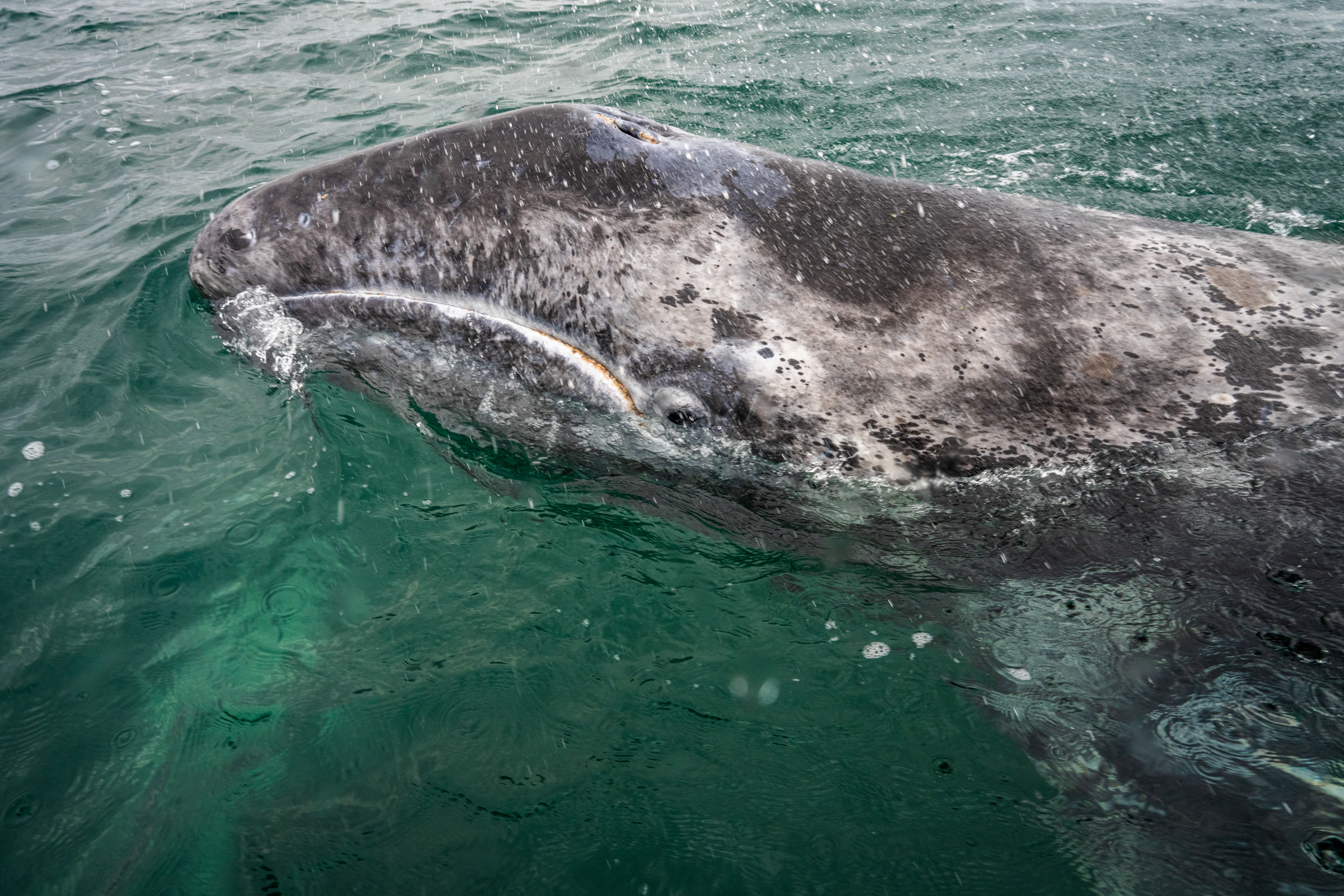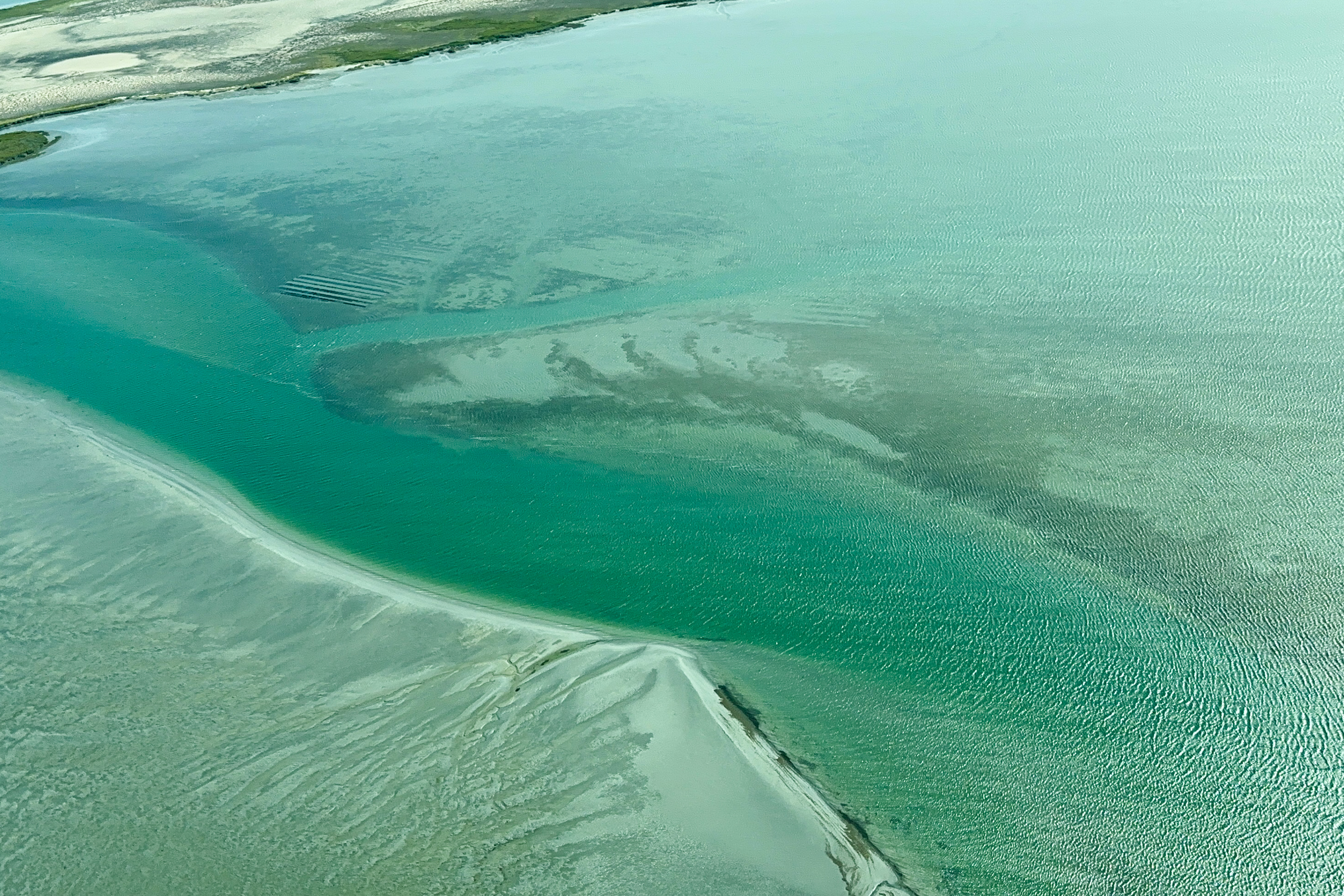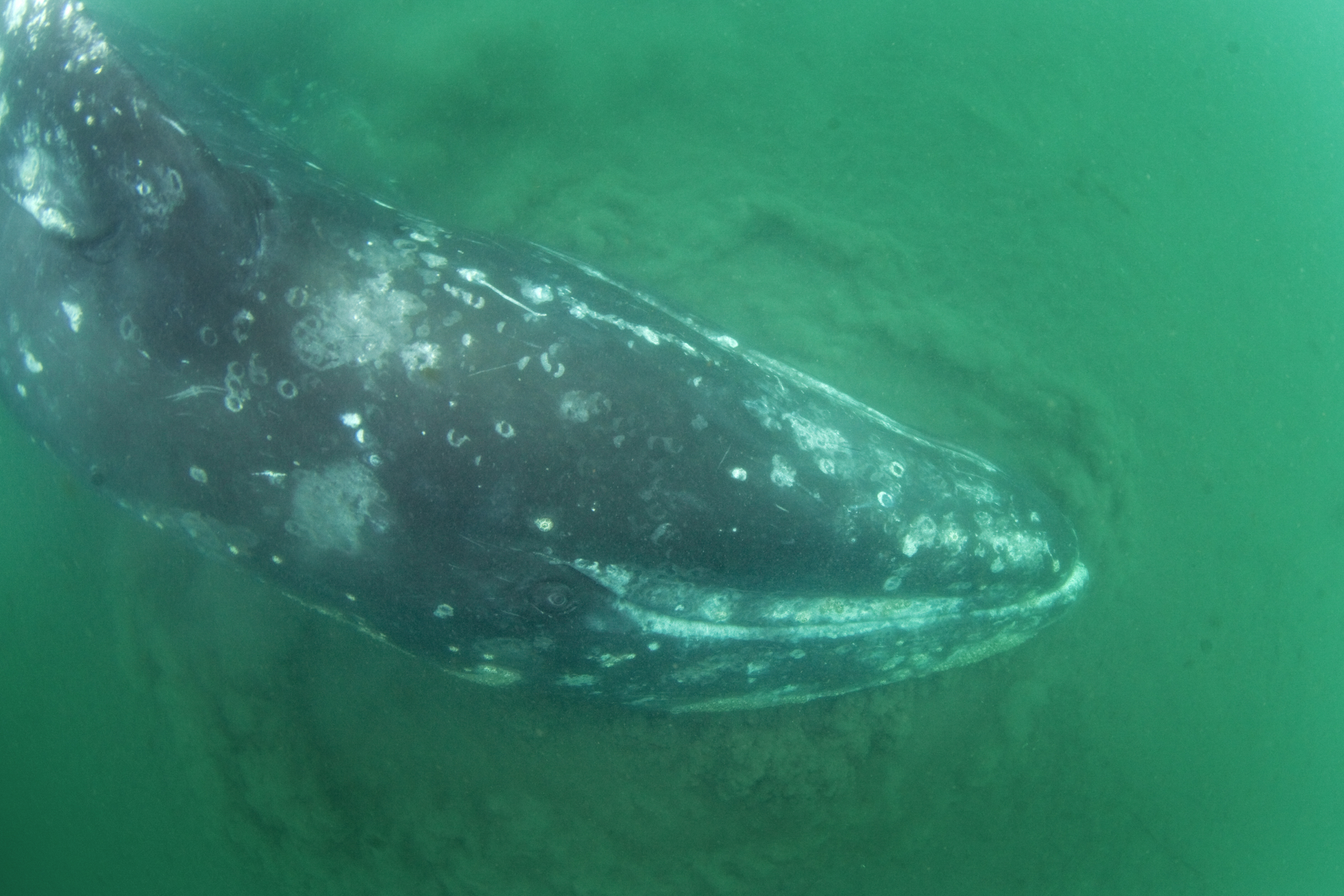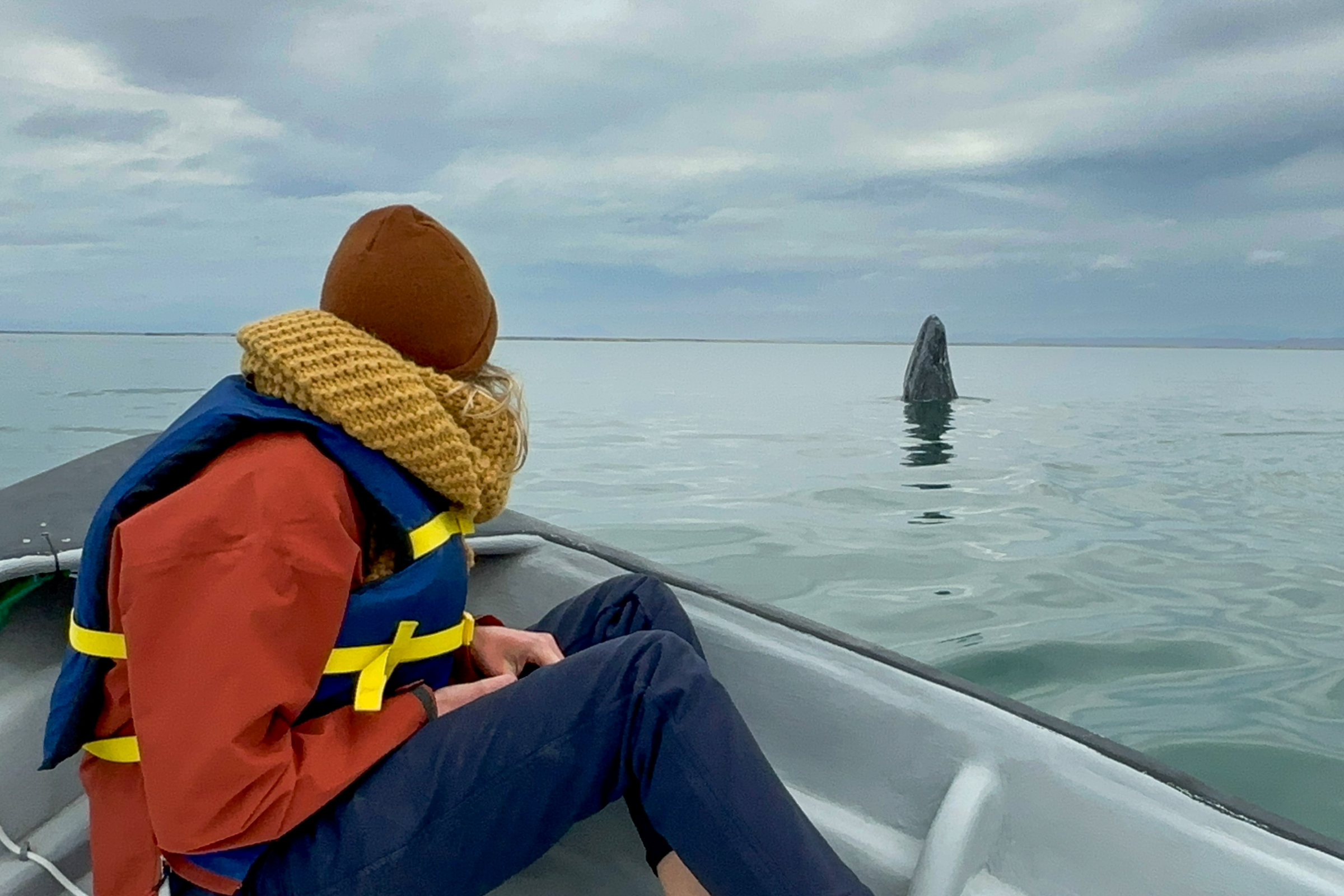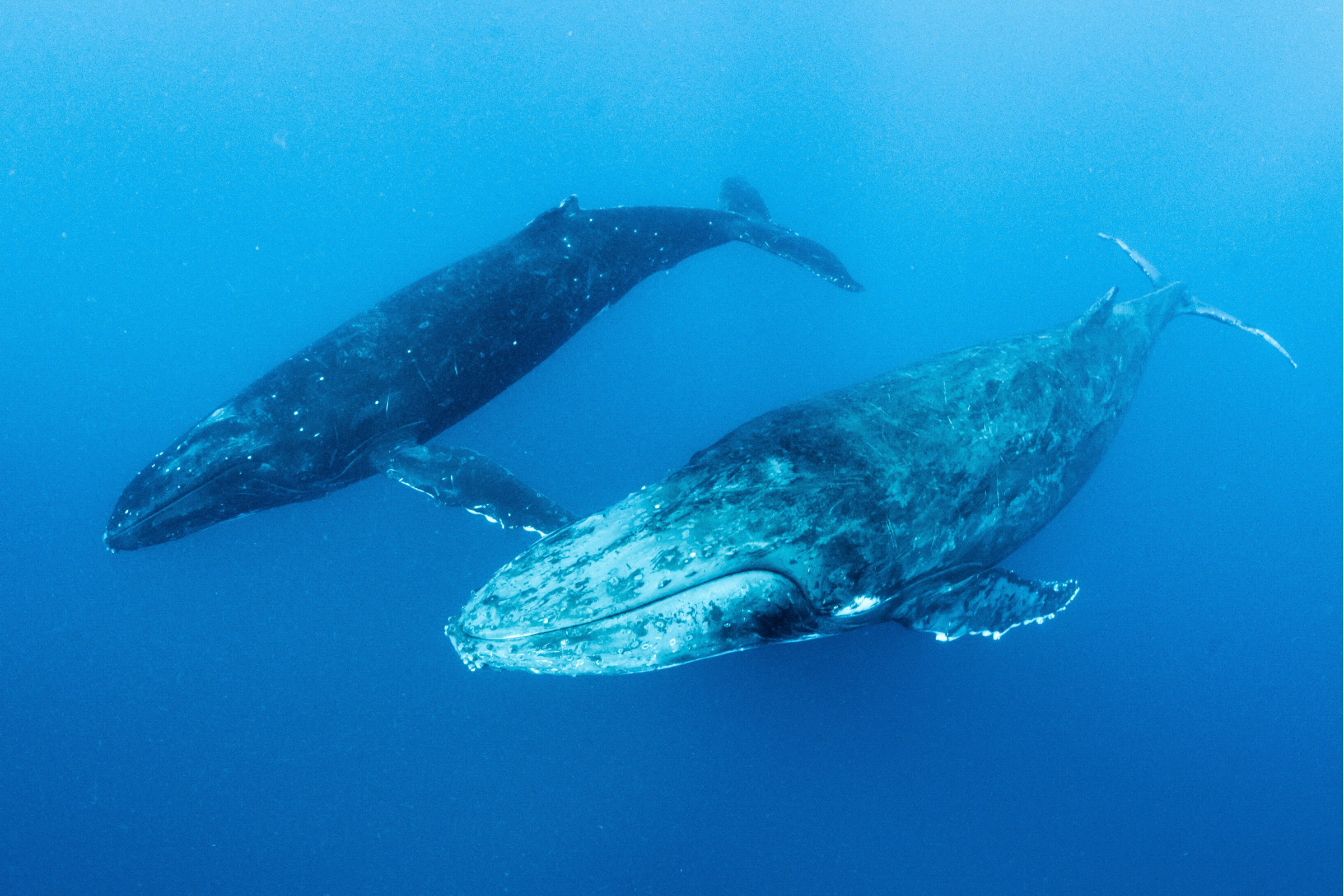Gray Whale
GRAY WHALE (Eschrichtius robustus)
The gray whale is famous for being the mammal undergoing the longest migration in the world, traveling from Alaska to Baja every year, completing a ten thousand mile round trip. Unlike most other whales, gray whales often feed on the ocean bottom, turning to a side and scooping up sediment from which they sift their prey. The gray whale lacks a dorsal fin and has very short baleen, making it unique among baleen whales.
Difficulty: Easy
Gray Whale Tour Statistics
1 GRAY WHALE
TOUR RUN
150 AVG NUMBER OF WHALES SEEN PER TOUR
15 MIN ON AVG
WITH CURIOUS WHALES
Gray Whale Description
The gray whale is the world's ninth largest whale, measuring around forty-five feet (13.7m) in length, and weighing around twenty five tons. They are baleen whales, characterized by the baleen, rather than teeth, they use to sieve plankton from the water. Gray whales are slate-gray in color and have white patterns over their bodies left by parasites. Their two blow holes create a heart-shaped blow when there is no wind. Their baleen is unusually short, which you may even be lucky enough to touch, as some of the most friendly whales in San Ignacio lagoon will open their mouths, showcasing their cream colored baleen. Instead of a dorsal fin, the gray whale has six to twelve dorsal crenulations, also called knuckles, which are small bumps near the back part of its back. Gray whales are covered in barnacles, which you will be able to closely inspect during our Gray Whales and Blue Whales in Baja photo tour.
This surfacing gray whale perfectly exemplifies the typical gray coloration of these whales, as well as the unique white markings. As its surfacing and exhaling, you can see the two blowholes on top of its head
Gray Whale Distribution and Habitat
Gray Whales are found in the northern Pacific ocean. Historically, they also used to be found in the Atlantic, but were extirpated there in the 18th century. Since the early two thousand tens, a few Gray whale sightings have been made in the Mediterranean ocean and the southern Atlantic ocean. They are very much tied to shallow water, and are almost always found close to the coast, often visible from the shore. Gray whales undergo the longest mammal migration in the world, covering over ten thousand miles roundtrip as they travel from their feeding grounds in Alaska, to their birthing grounds in Baja, Mexico, and back again. During this record setting migration, gray whales travel both during the day and at night, covering about 75 miles (120km) a day.
We encounter the whales when they are at the most southern tip of their migration, traveling to the warmer, protected waters of the lagoons of Baja California. Our tour is held in early March, the time at which the most whales are found in San Ignacio lagoon, including mothers, calves, and males hoping to breed. The calving lagoon is a protected marine sanctuary, ensuring the safety and conservation of the gray whales.
San Ignacio Lagoon in Mexico provides the perfect safe haven for gray whale mothers to give birth and start raising their young. During the migration gray whales generally hug the coast.
Gray Whale Feeding Biology
Gray whales are unique among whales in how they feed, generally scooping up animals from sediment on the ocean bottom. This too is why gray whales are so near shore dependent. They dive down, turn their bodies sideways (and yes, each individual gray whale has a preference onto which side they turn, though most are right flippered), partially bury their mouths into the ocean sediment, and then sift the sand and water, while the prey gets trapped by the keratinaceous baleen. They primarily predate on crustaceans in the ocean seabed, including amphipods and ghost shrimp. This ocean bottom feeding, also called benthic feeding is generally employed during their migration along the Pacific coast. When they reach their feeding grounds in the north, they switch to feeding planktonically, predating on animals within the water column. Gray whales will roll onto their side, while their fluke remains above water to feed on animals near the surface. Additionally, they will simply open their mouths to feed on animals on the surface, like many other baleen whales.
A Gray whale feeds on the benthic crustaceans of San Ignacio lagoon in Mexico. By turning its body and then submerging part of its mouth into the sediment it scoops up its prey. Photo by Martin Prochazkacz.
Gray Whale Social Organization
Gray whales are generally seen as solitary animals, traveling by themselves or in loose groups that don't have a permanent structure. It appears that long-term relationships between individuals are very rare. To communicate with each other, gray whales generally use low-pitched rhythmic pulse like clicks. For the gray whales that we see in Baja, they generally make their calls at forty hertz, which they will make at any time of year. The sound we would be most likely to hear in the San Ignacio breeding lagoon is a pulsing knock sound that is repeated up to eighteen times. Besides their pulse like sound, gray whales will also make sounds that resemble growls, rumbles, chirps, and others. We do not understand the meaning or intention of these calls. Besides their vocalizations, gray whales also breach, fluke slap and spyhop, all behaviors we readily observe during our gray whale tour in Baja.
Why the gray whales choose to interact with us as humans in San Ignacio lagoon is still a mystery. Curiosity doesn't seem to be the answer since the same individuals will repeatedly go up to boats to receive attention and petting. Maybe it just feels good to get a back and chin scratch. One thing is for sure, when you are eye to eye with a gray whale there is so much going on in both the whale, as yourself.
A gray whale is spyhopping in San Ignacio lagoon in Baja California, Mexico during our tour.
Gray Whale Reproduction
Gray whales only mate and give birth during specific months of the year. During their southbound migration, females go into estrus in late November and early December. During this time multiple males will try to mate with the female. After a thirteen and a half pregnancy, the female will give birth in Baja, Mexico, where we hold our tour. When born, the gray whale calf is around fifteen feet in length and already two thousand pounds. Gray whales like to give birth in the secluded bays of Baja, because it ensures the calves' safety from predators like orcas and sharks during this vulnerable time period. At around two and a half months of age for the calf, the mother starts the migration northward with her young. Gray whales will nurse their young until seven months of age. In general, gray whales give birth every other year, but annual births have been reported. During our tour you will definitely see gray whale calves near their mothers, as they grow in size, preparing to make their migration northwards.
Gray whale mothers and calves leave the Baja birthing lagoons when the calf is around two and a half months old, migrating north to their feeding grounds. Photo by Tharuka Photographer.

